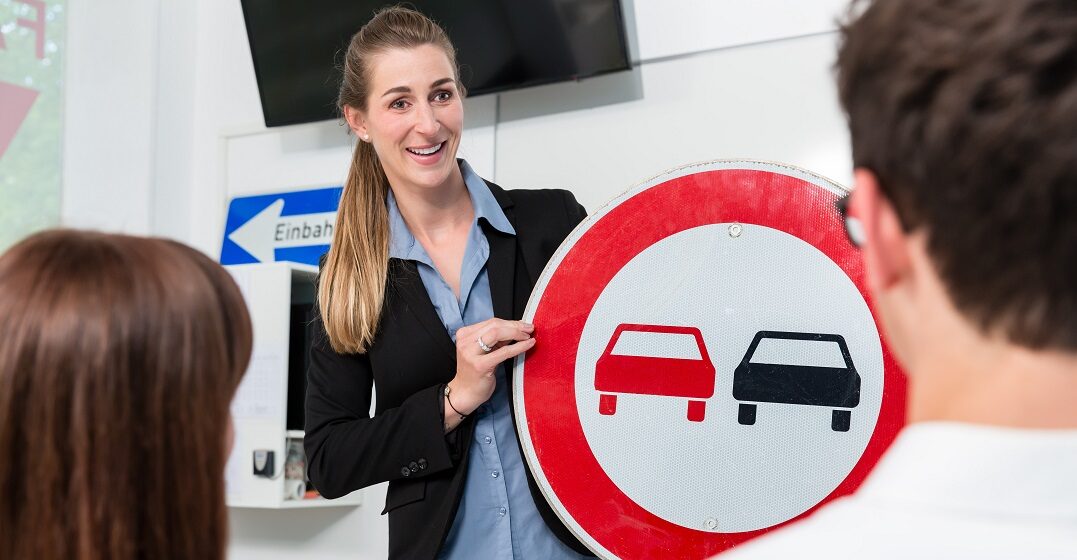Updated on October 16, 2024

The 13 most important driving signs in Germany

No matter how experienced you are at driving, being well-informed about traffic signs and regulations is essential to staying safe on the road. This is even more critical if you are driving abroad and outside your comfort zone. The more familiar you are with the traffic signs, the more relaxed and confident a driver you’ll be.
Road signs tend to vary from one country to another, so make no assumptions and learn the signs before you set out. And if your destination happens to be Germany, be prepared to learn the most important of the over 1.000 different traffic signs in the German Traffic Code. These signs are divided into four categories: warning signs, regulation signs, guide signs, and supplemental signs. To get you started here are the 13 most common and most important road signs you will come across while driving in Germany.



Conveniently for English speakers, stop signs in Germany also read “STOP” and not “HALT” (halten = to stop). At a stop sign, you must bring your vehicle to a complete stop, then check for other vehicles before continuing on your way.
The yield sign is a red-and-white upside-down triangle. It indicates that drivers must slow down and yield the right of way to other road users. Drivers must also be prepared to fully stop, if necessary.
This circular sign with a red border indicates the maximum speed limit permitted on a particular stretch of road. Note that this limit is given in kilometers per hour (km/h) rather than miles per hour. Be sure to keep an eye on this — even on the Autobahn. Contrary to popular belief, not all German highways allow cars to drive at an unlimited speed.
The sign on the left (with two diagonal lines) indicates that both stopping and parking is prohibited in this area. The sign on the right (with only a single diagonal line) indicates that you may not park but you may stop for up to three minutes. Be sure to look into the further variations on this sign.
The Einbahnstraße sign means “one-way street” in German. The traffic on this street flows in one direction only. If there is parking, you may only park in the direction of the traffic flow.
This distinctive red circle contains a black arrow in a “U” shape with a red diagonal line through it. It means you are not allowed to make a U-turn and must proceed to another junction where this maneuver is permitted.



A red triangular sign with a figure walking across stripes indicates that there is a pedestrian crossing 150 meters to 250 meters ahead. The driver must prepare to stop for pedestrians and must only proceed when all pedestrians have crossed.
A red circle with a white horizontal line indicates that drivers are not allowed to enter this roadway.
This sign indicates that there is an unguarded railroad crossing ahead. Proceed with great caution!
The red and black cars in this sign indicate that overtaking another vehicle is prohibited in this area. Single-track vehicles like motorbikes and mopeds are exempted from this rule.
Variations of this sign indicate that one lane will soon end and thus two lanes of traffic will merge. The lane on the left still has right of way, so the vehicle on the right must indicate and only move into the left lane when the way is clear and it is safe to do so.
The green and yellow Haltestelle sign indicates a bus or tram stop, so you will need to be cautious of travelers boarding or disembarking from public transport. You cannot park within 15 meters of this sign.
Max width and height signs indicate the specific measurements allowed, in meters. These are very important signs for truck or caravan drivers, or for those towing a boat or other oversized load.
These signs are just some of the many important road signs you’ll need to know to drive safely in Germany. Whether you’re buzzing down the Autobahn or battling the Berlin morning traffic, pay careful attention to these signs. Hopefully you won’t have to worry about any brushes with the law or, worse still, any costly accidents.


